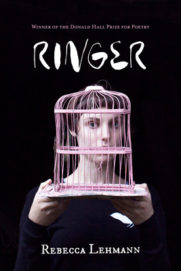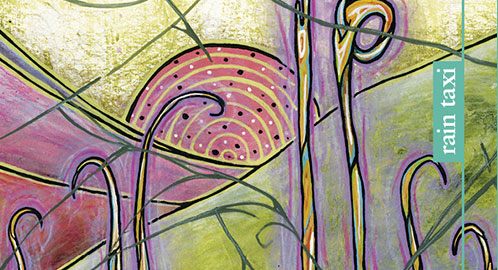an interview with Kristin Dykstra and Kent Johnson

Interviewed by Peter Boyle
Born in Montevideo, Uruguay in 1921, Amanda Berenguer is among the many outstanding 20th-century poets from Uruguay and Argentina. Alongside such writers as Olga Orozco, Alejandra Pizarnik, Marosa di Giorgio, and Silvia Guerra, Berenguer is part of a constellation of poets surely deserving of more attention. Editor-translators Kristin Dykstra and Kent Johnson have opened the door for U.S. readers with the publication of Materia Prima (Ugly Duckling Presse, $22).
Berenguer published her first book of poetry at age nineteen, but came to prominence in 1966 with the collection Materia prima. Striking for its imaginative engagement with science, Materia prima features long, inventive, cosmic poems that speak of Moebius strips, the Magellanic Clouds, and UFOs. While other poets who have found a successful voice and subject matter in their mid-forties often settle comfortably into that mode, Berenguer reinvented herself many times over throughout her long life. In preparing this first edition of Berenguer's poetry in English translation, Dykstra and Johnson have chosen a selection from six later books to sit beside samples from her 1966 collection—so the reader will find, as well as the “scientific” poems of 1966, visual poems from Composición de lugar / Composition of Place (1976); more personal, often humorous, poems from Identidad de ciertas frutas / Identity of Certain Fruit (1983); a range of experimental and ekphrastic poems from La dama de Elche / The Lady of Elche (1987); a mix of mock aphorisms and iconoclastic anti-poems in Con el tigre entre las cosas / With the Tiger Among My Things (1986-1994); a study of real and imagined inner spaces in La botella verde / The Green Bottle (1995); and the brief, intimate poems of her posthumous collection La cuidadora del fuego / The Keeper of the Flame (2010).
Kristin Dykstra is the distinguished translator of nine books by the contemporary Cuban poets Reina María Rodríguez, Omar Pérez, Ángel Escobar, and Juan Carlos Flores. She is principal translator of The Winter Garden Photograph by Reina María Rodríguez (Ugly Duckling Presse, 2019). She guest-edited “Out of Alamar,” a dossier about poet Juan Carlos Flores (1962-2016) for Chicago Review in 2018, and her translation of Cubanology, a book of days by Omar Pérez, appeared the same year.
Kent Johnson grew up in Uruguay and has a prolific track record as a translator, poet, and provocateur of poetic theory and practice. In collaboration with Forrest Gander, he is the translator of two volumes by Bolivian poet Jaime Saenz: Immanent Visitor (University of California Press, 2002) and The Night (Princeton University Press, 2007). He is also co-editor, with Uruguayan poet and critic Roberto Echavarren, of Hotel Lautréamont: Contemporary Poetry from Uruguay (Shearsman, 2011).
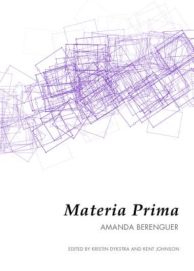 Peter Boyle: What especially drew you to the work of Amanda Berenguer? What was the source of your initial enthusiasm? Did you find that changing focus as you went along?
Peter Boyle: What especially drew you to the work of Amanda Berenguer? What was the source of your initial enthusiasm? Did you find that changing focus as you went along?
Kent Johnson: Years back, I edited an anthology of poetry from Uruguay, the country where I spent most of my childhood and adolescence. The book was published in the UK, in 2011, by Tony Frazer's singular press, Shearsman Books, and is titled Hotel Lautréamont: Contemporary Poetry from Uruguay. On a trip to Montevideo, in 2008, to gather materials for the book, I met with the leading poet and critic Roberto Echavarren and the literary scholar Amir Hamed. Echavarren would become my co-editor of the anthology and Hamed would come to write a note of introduction for it. Echavarren had been a close friend and publisher of Berenguer, while Hamed had featured her, some years before, in his key anthology of the country’s innovative poets, Orientales: Uruguay a través de su poesía. Both of them spoke of her as one of the greatest writers not just of Uruguay, but of twentieth century Latin American letters. So they were the ones to place the work in front of me, though the poet Silvia Guerra (whose wonderful, moving interview with Berenguer concludes Materia Prima) had spoken to me of the poet at a conference in Chile, in 2005. The name didn’t register, then. Like virtually all U.S. poets at the time, I was ignorant of her work. But as soon as I read it (I remember the night, at one of Montevideo’s historic boliches [old taverns] in the Ciudad Vieja), I knew I’d encountered one of the greats.
Kristin Dykstra: To build on Kent’s remarks, this anthology took more than a decade to compile, and I wasn't initially an editor. I was the translator working with selections from La dama de Elche. That first exposure showed me that Amanda Berenguer is a spectacular example of someone whose work should have been more widely translated during her lifetime. She really deserved a significant anthology. After Kent asked me to become a co-editor, I wanted to combine a commitment to Berenguer—the insistence on the anthology as a statement against her near-absence from the English-language zone—with an acknowledgment of those few translators who had given attention to individual poems in the late twentieth century (publishing them in magazines and anthologies). With Berenguer’s quality and the particular group of translators interested in joining us for this next round, I never doubted that our eventual twenty-first-century anthology would be strong.
PB: How did you decide on the selection of poems to be translated from Berenguer's various books? What was the process? It's an enormous responsibility as the selection offered shapes the way readers outside Latin America will view her work. For example, with La cuidadora del fuego, on the basis of the selection provided in Materia Prima, I thought La cuidadora would be a book largely of ekphrastic poems, or at least poems concerned with high culture figures, as well as poems influenced by Emily Dickinson, but in fact there are also a lot of very intimate, confessional almost, poems in it. Often quite funny poems that do a lot of shifting in tone. What kind of criteria did you use in making the selection? Was it purely personal taste, were you aiming at diversity, or were you conscious of selecting poems that are radically unlike what you might find in a poet from the United States? Did you perhaps feel you were selecting the poems you would most like to have written yourself?
KD: Kent had the initial contact with most translators, and perhaps he could say something about how he thought about selection at that time.
Later, after I agreed to co-edit the anthology, we decided to take a risk on the visual poems. I say “risk” because we didn’t have a publisher lined up in advance. We didn’t know how many publishers would be open to including this section, not just because of the formatting challenges, but also Berenguer’s use of color. If we had just left these poems out without pitching them to a press, though, we would have felt we failed Berenguer. So eventually I went to Urayoán Noel with the translation request. He created a sample, rather than a fully finished set, due to the time, difficulty, and uncertainty involved. Once it became clear that Ugly Duckling Presse would include these poems, we had to go back and fill in a memorable item from the set. In “Trazo (Derivado 1),” Berenguer’s handwriting is hard to read. After Ura created a draft, we realized we were interpreting her words in the original differently. I asked her son Álvaro to review a transcribed version in the Spanish, before we settled on a final version.
As Ura has remarked, Berenguer was probably treating handwriting as an unstable “trace” upon the page. From the editorial side, I’d say that an attempt at clarification remains an important procedural step. In this case, I asked her son to serve as our “authority,” which is not an inevitable choice, but we took his guidance. It’s only through the process of wrestling with traces that you fully experience the ambiguities at stake, when dealing with tracings literal and metaphorical. With this idea in mind, I encourage readers to look closely at the original. Grapple with her writing for yourself. Try writing out your own transcript in Spanish, as Ura and I each did, because the print anthology doesn’t reveal that intermediary step between “original” and “translation.”
Another editorial issue that arises around poetry is that word or page count so often fails to capture the density of the work. Since Berenguer created such diverse pieces across her career, striking a balance required discussion. How many pages of short, dense poems are comparable to one visual poem? To prose poems? To prolonged cosmological effusions? Anna Deeny Morales and I both prepared more poems than we needed for Materia Prima, having taken an interest in translating our whole books in the future. We trimmed our selections down to achieve more balance across the various books represented in the anthology. My poems were longer, so as I was talking with Anna about how many of her poems to include, I decided to stop at four from The Lady of Elche to her final ten from Identity of Certain Fruits. It was tempting to include more from Anna, since her beautiful project unfolds as a series. But we can look forward to seeing the entire collection someday.
In each of these examples—Ura, me, Anna—one factor in choosing individual poems was the leaning of the translator, while another was editorial response after initial work by the translator arrived. As for Cuidadora, if memory serves, Kent had already done some poems from that book but hoped for more, so I later went in to see what else would round out that selection. The book can be read as a sort of retrospective. With that vision in mind, I thought we should include the Ducasse poem, and "Practically Supernatural" echoed off other poems spanning her career. At the same time, I thought about the fact that Berenguer had numerous very short poems interspersed with the longer ones in Cuidadora. These help to create the variety that characterized her final collection; I think of them as perversely slight. I mean: deliberately slight, in contrast to her baroque moments, yet still echoing against them in knowing retrospective. Amanda Berenguer is funny in more than one way.
On the question of differences/resemblances to U.S. writers, I try not to be influenced by expectations about nation or culture too heavily, especially at the start of a selection process. I like to think about the writer’s range in a prolonged way as I translate. It’s a way to avoid traps of exoticism and excessive dependence on interpretive nationalism, and perhaps more important: I like to be surprised by affinities that leap into view. Especially when working on a writer with so much material that was not previously translated into English, it’s a joy to see how a pile of different translators can process the poems.
KJ: Peter, you ask, “or were you conscious of selecting poems that are radically unlike what you might find in a poet from the United States?” The marvelous thing about Berenguer, and there are very few poets like her in this regard, is how “radically unlike” herself she is from book to book. Each book from which we selected for the Materia Prima gathering is as if written by a wholly different author. It seems bizarre that the same person who did the wild (and sharply political) visual material that Kristin mentions, the Neruda-echoing odes of Identidad de ciertas frutas, or the non-Euclidean-geometry meditations of La botella verde, for example, is the same poet who wrote La dama de Elche or Cuidadora del fuego. In fact (and Cuidadora is a fine example), Berenguer often dramatically shifts voice and register within single books. So we didn’t have to think about Berenguer sounding or not like someone else from the US; she doesn’t even sound like Amanda Berenguer, as it were, from work to work! I think of her, in this regard, as a kind of Fernando Pessoa who chooses to sign her own name to everything she writes. It’s like she just accepts her multiple heteronyms as natural realities of “Amanda Berenguer.” You apparently intend to translate the complete Cuidadora del fuego, and given your serious engagement with the channeling of various voices in your own work, Peter, I can’t imagine a better person to take on that singular book.
PB: Of the poems you translated yourself, is there one you could comment on, maybe one that presented special difficulties and how you resolved those? Or perhaps one that surprised you as it opened up for you during the process of translating?
KD: I began those translations from The Lady of Elche years ago. Given the passage of time, what I remember most vividly from my section is the surfacing of more global issues.
Berenguer creates self-portraits and images of family. She references her home and garden in Montevideo. But she fuses personal anchors with other places and times. In the poems we included from this book, you can see landscapes of classical mythology; sites from her ancestral history; the museum housing the “Lady of Elche” sculpture (which is associated with Iberian identity, but she explicitly bridges it to Machu Picchu); and a more subtle terrain of twentieth-century violence, which I find in smaller fragments throughout the book instead of concentrated within any single poem—in the section from Lady of Elche, for example, you can see her reference to Hiroshima.
I remember wondering, as I moved through those poems, how their displacements would add up in my mind. I had read the poems in the original, of course, but constructing poems in translation activates a different perspective. I wondered, Where is Amanda Berenguer? She includes an explicit conceptualization of her local river as “mestizo” in “Day of rain,” for example, a word that’s often a cue to look for cultural fusion. That move somewhat unsettles the prominent classical and European references—they become a little more relative, a little less absolute.
In the end, as Kent suggested, I see the query about location becoming central to her poetics. Part of the satisfaction for me materializes in the glittering array of replies.
In her interview with Silvia Guerra in the back of this anthology, Berenguer responds to a question about image and metaphor with language of location and self. This entire section of the interview jumps into relief for me now. She says, “What’s extraordinary about metaphors is their ability to connect distances, to relate images instantly like a ray of light without any space in between.” I have a distant memory of pausing over her prepositions and conjunctions, words structuring the incremental motion of any given phrase. What is this space in between? How does that ray fall through the distances between solid objects?
During the editing stage, I went through Mónica de la Torre’s translations for the anthology, which she revised substantially last fall. I remember noticing that she was often addressing these questions of connectivity too. Mónica had some of the long, cosmic poems channeling the neobaroque, and she was often forced to rearrange the order of words within them. One example appears in a poem dealing with unidentified flying objects. This meant transitioning a four-letter acronym, OVNI, to a three-letter acronym in English, UFO. And the words in the acronyms appear in a different order in Spanish than in English. She had to rearrange entire segments of the poem from the get-go. We got a lot of questions about that obvious element of this poem from readers along the way, but actually, I think the more interesting choices came when Mónica considered ways to handle more ambiguous terms all throughout the complex grammar activating these poems, opening or especially compressing spaces between components.
KJ: My own translations are out of Cuidadora del fuego, her last, posthumous book. Most of the poems in it are very lyrical, reminiscent of the Russian Silver Age, which Berenguer loved (in fact, I have discovered that one of the poems I translated, her “Leonardo da Vinci y yo,” is very possibly influenced, in its gentle pronominal play, by Marina Tsvetaeva’s famous “The Desk,” though it might just be coincidence). But these serene, Acmeist-resonant classical poems in the book—with the partial exception of a few outliers among them, like the ones directly channeling Dickinson’s elliptical cuts and swerves, dashes and all—did not present the kinds of conceptual conundrums for the translator that other sections of the book do. Which isn’t to say that there aren’t challenges of a subtle, quite tricky nature that present themselves in these syntactically straightforward poems. Of course there are. Speaking of those outlier pieces, certain passages of her near-pornographic “Los culos de Bosco” drove me nuts, for example. But nothing like what Mónica de la Torre had to deal with in the OVNI/UFO poem Kristin mentioned. That translation should really win some kind of award. As should Urayoan Noel’s renderings of the visual/concrete poems. And as should all of our translators. I just want to note it, and I know Kristin agrees: We couldn’t have been luckier with our translation team, every brilliant compa in it.
PB: You have both emphasized the immense variety of styles and poetries within Berenguer's work—and it's a massive work, more than sixty years of continuously writing poetry, her first book in 1940, her last in 2009. Kent, you've mentioned how the differences between her books are consistently so extreme other poets might have invented heteronyms for them. Yet, reading the interview with Silvia Guerra at the end of Materia Prima, Amanda Berenguer seems to be convincingly one person. How would each of you see the commonalities, the recurrences in her work, perhaps a particular vision of the possibilities for what poetry can be, or certain recurrent obsessions or themes? I'm thinking of things that she mentions in the interview, like her experience of seeing a dead dog by the side of the road and feeling something opening up in her, "a fall into nothingness."
KD: At our New York launch event, Mónica observed that some of Berenguer’s poems are modular—you could move components around, and the poems would still work well. This makes sense to me. For my part, I’ve come to imagine a scenario while working with her poems. I envision her acts of attunement to the energies operating in and between her words. Then, an attunement to building those energies into the larger energy fields of a complete poem and eventually the collection. (Essentially, I’m imagining her poetic process retroactively as a tool for enabling my own attunements. Maybe that’s an unconscious facet of the reading of poetry. Anyway, it’s helpful for the making of translations.) Berenguer has a characteristic ability to concentrate the energy level in her lines, or to restate that idea in some of your language above, an obsession with creating vibrant lines of sight and sound.
Differentiating amongst her books remains essential, for the reasons we’ve been giving—each collection centers on its own separate concept, and she activates different dimensions of intelligence. So she channels more humor in one place, and she dials up the sensuality in the environment of a different poem. She tunnels into an intense curiosity about the nature of the universe, adopting scientific or mathematical language; then she pursues the workings of the same universe through mythology. Serial obsessions, let’s say, that she’s able to maintain and convert into their own structures: the length of her lines and other visual qualities also vary amongst books, and some pieces will be more accurately described as “modular” than others. But to return to your emphasis on recurrence, I’ve come to think of her as using a particular tuning fork to calibrate her poems, always with the purpose of calling “a very full, large, and luminous space” into being, something she explicitly references in that interview.
KJ: Yes, Peter, it seems a paradox at first glance, I suppose: The multiple styles and voices coming from a single, perfectly sane, down-to-earth person, as Silvia Guerra helps us see her in the book’s interview. Wouldn’t you have loved to spend a few hours over a gourd of mate amargo with Amanda Berenguer? Both Roberto Echavarren and Silvia described her presence to me as that of a calm, deeply kind, singularly wise friend. But, then too, Pessoa, whose writing corpus might lead one to think he had dissociative-identity disorder, was, despite his alcoholism, apparently quite normal in daily life, too, even outwardly unremarkable, in person. Kierkegaard, who produced so much of his philosophy under a cast of different-sounding heteronyms, was a perfectly bourgeois and respectable figure in Copenhagen, in most ways. Or Cervantes, whose Don Quixote was first presented as if a translation from a work written by an Arab author—what would stand as a transgressive forgery for us, today—was supposedly a very esteemed person in social circles. So to me that tonal multiplicity in Berenguer’s work, which includes the open borrowing of voices (as with her channelings of Dickinson, or the Russian poets of the Silver Age), stands as a perfectly natural and mature quality of deep poiesis.
PB: Reviewing Materia Prima in the Kenyon Review Paul Cunningham speaks of Berenguer's poems as “expanding structures” and “alchemically forged.” Scientific and alchemical preoccupations seem to run through all of Berenguer's work, yet her poems are also politically and personally charged. Would you like to comment on how you see these two often opposed tendencies, the abstract, and the personal, working together in her poems?
KD: For me the best way to comment on the slide between the abstract and the personal, their organic interconnection, is to highlight how palpable Amanda Berenguer’s curiosity feels in her various explorations. One senses that she is drawn to complex geometries because she wants to know what it feels like to bend your mind around them.
The example I’ll use doesn’t appear within the anthology. These are lines I’m thinking about now, in continuation of the anthology’s mission: one of my post-anthology projects is the completion of The Lady of Elche. Rather than adopting scientific vocabulary in this collection, she adapts mythology to the lifequests she depicts. The poems serve as entries in her personal logbook. Another frame for these poems: they are navigations. Here’s an excerpt from the opening poem, forthcoming in full in the next issue of Stanford’s literary magazine, Mantis (thanks to Melih Levi). You can see Berenguer’s speaker thinking through a landscape using a lens both personal and obviously crafted, abstracted with mythologies in mind. Note her emphasis on wonder. This poem is actually set where land and sea meet, in beaches that Berenguer locates around the Uruguayan city of Montevideo:
I could only think
through smoky or yellowed haze
garlanded with violets
which looked like ill-proportioned medusas
sailing on the deceitful breeze
the breeze?
waters from the flat fold the sky
pale with wonders
in the place of birth
of false birth
the more I walked the more I aged
Berenguer has placed this activity in threshold sites, traditionally powerful in mythology. In the original Spanish, the word I’ve rendered above as “wonders” is “prodigios.” The entire original phrase is “pálido de prodigios,” describing not a person but the space energized around her. This is the liminal space she’s actively navigating when she thinks and walks and ages. I may end up trying to capture the pattern of consonants differently at some point (the duplicated “p” sound), but in this rendition, I was thinking about the importance of asserting wonder, a quality that Berenguer is attributing to the world. Wonder is outside her, wonder is within her. She survives on this wonder, and she makes me want to survive by channeling wonder too.
KJ: Let me work off from Kristin’s superb comments and mention another work, which we’ve touched on previously: Berenguer writes and sculpts the remarkable abstract and personal/political works of Composición de lugar in 1976, three years after the military coup in Uruguay, when many of her friends have been imprisoned or worse. These poems are both abstract/experimental and also deeply personal, no less than many “abstract” works of Mallarmé and Apollinaire fuse those supposed contraries. Berenguer’s visual works (along with much of her other writing) are at once poems of private mourning and encrypted social hope—a brave and surprisingly successful attempt to sneak past the very earnest labor of the military censors, who were maybe the toughest of all the southern-cone regimes, insofar as press and literary control were concerned, given their direct inspiration from the contemporaneous fascist Greek junta of the ’60s and ’70s. I’d propose that Berenguer, who chose to hunker down in Uruguay during the years of the dictatorship (Composición de lugar / Composition of Place is surely not a randomly chosen title), deserves every bit as much admiration as any of the many fine writers who expressed their more publicized opposition in exile.
That continuity of the abstract and conceptual with the personal and political emerges again, in the 1980s—though this time in a more classically feminist, hilariously satirical vein—immediately after the fall of the dictatorship, with A Study of Wrinkles: A Contribution to the Field of Cosmetology, part of a work (With the Tiger among My Things) that nearly gets lost in the immediate aftermath of the dictatorship years. It’s included in Materia Prima.
No, Amanda Berenguer has no problem shuttling back and forth across thematic or tonal “poles.” She does it freely, contradicting herself in multitudes, and in the most joyous and inspiring ways. We eagerly encourage American poets to check her out.
Click here to purchase this book
at your local independent bookstore

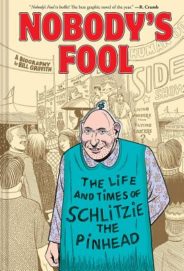 Bill Griffith
Bill Griffith
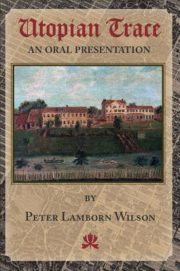



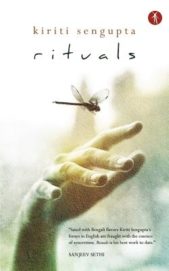
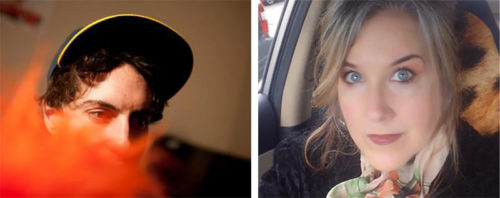
 Jeff Alessandrelli is the author of the full-length poetry collections
Jeff Alessandrelli is the author of the full-length poetry collections 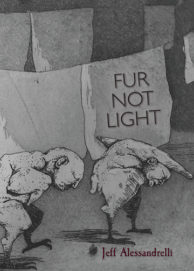
 Paula Cisewski is the author of four full-length poetry collections most recently
Paula Cisewski is the author of four full-length poetry collections most recently 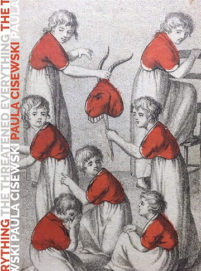


 Rebecca Lehmann is the author of the poetry collections Ringer (
Rebecca Lehmann is the author of the poetry collections Ringer ( MC Hyland is the author of the poetry collections THE END (
MC Hyland is the author of the poetry collections THE END (